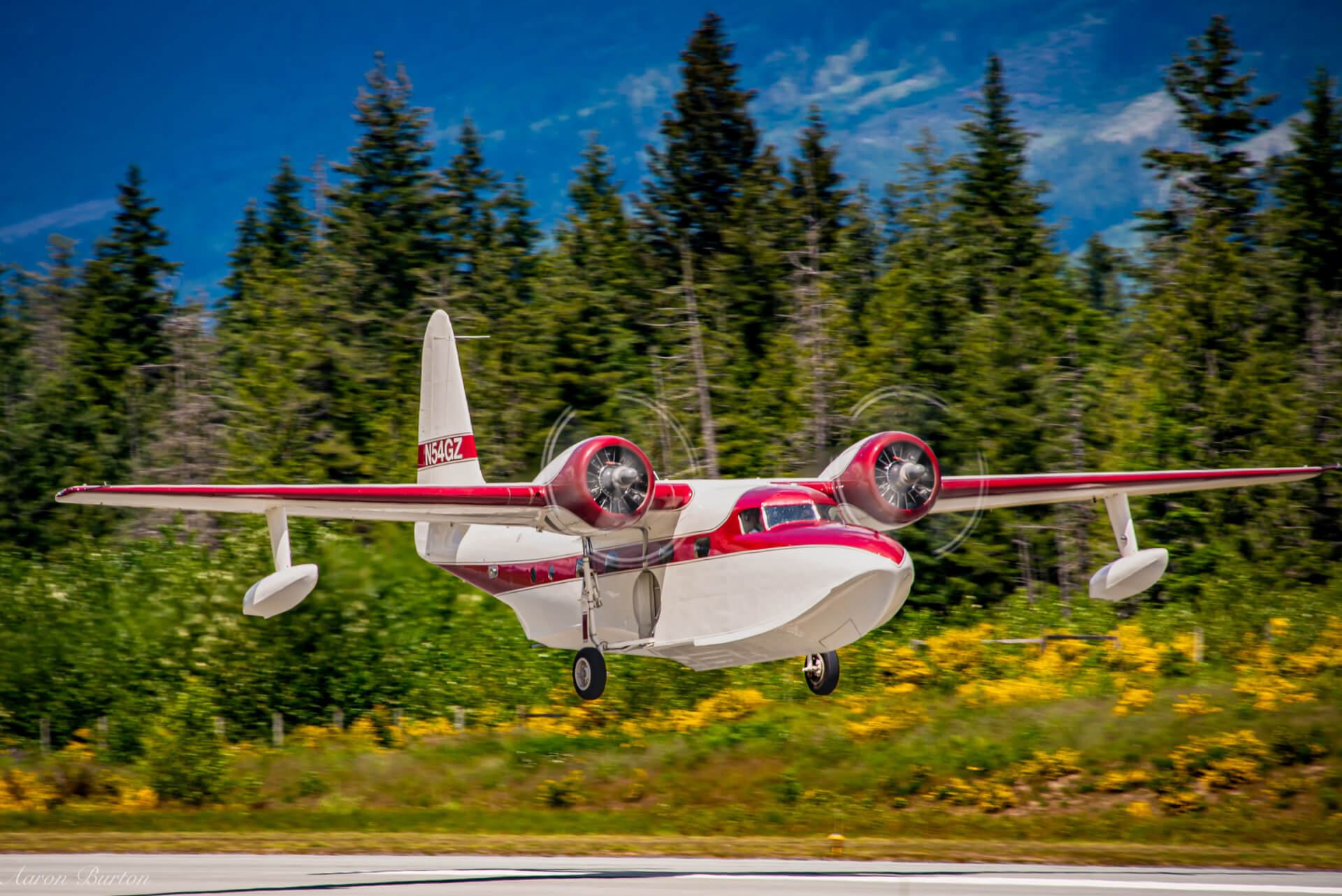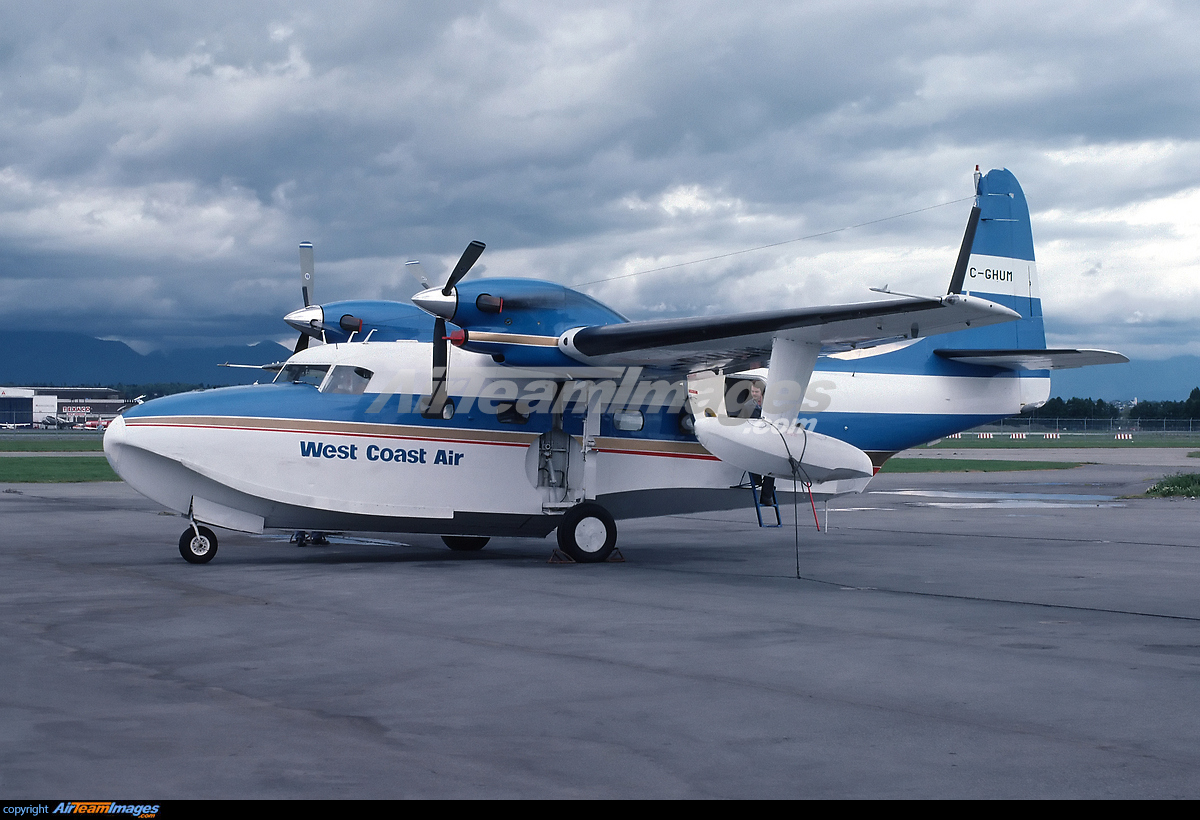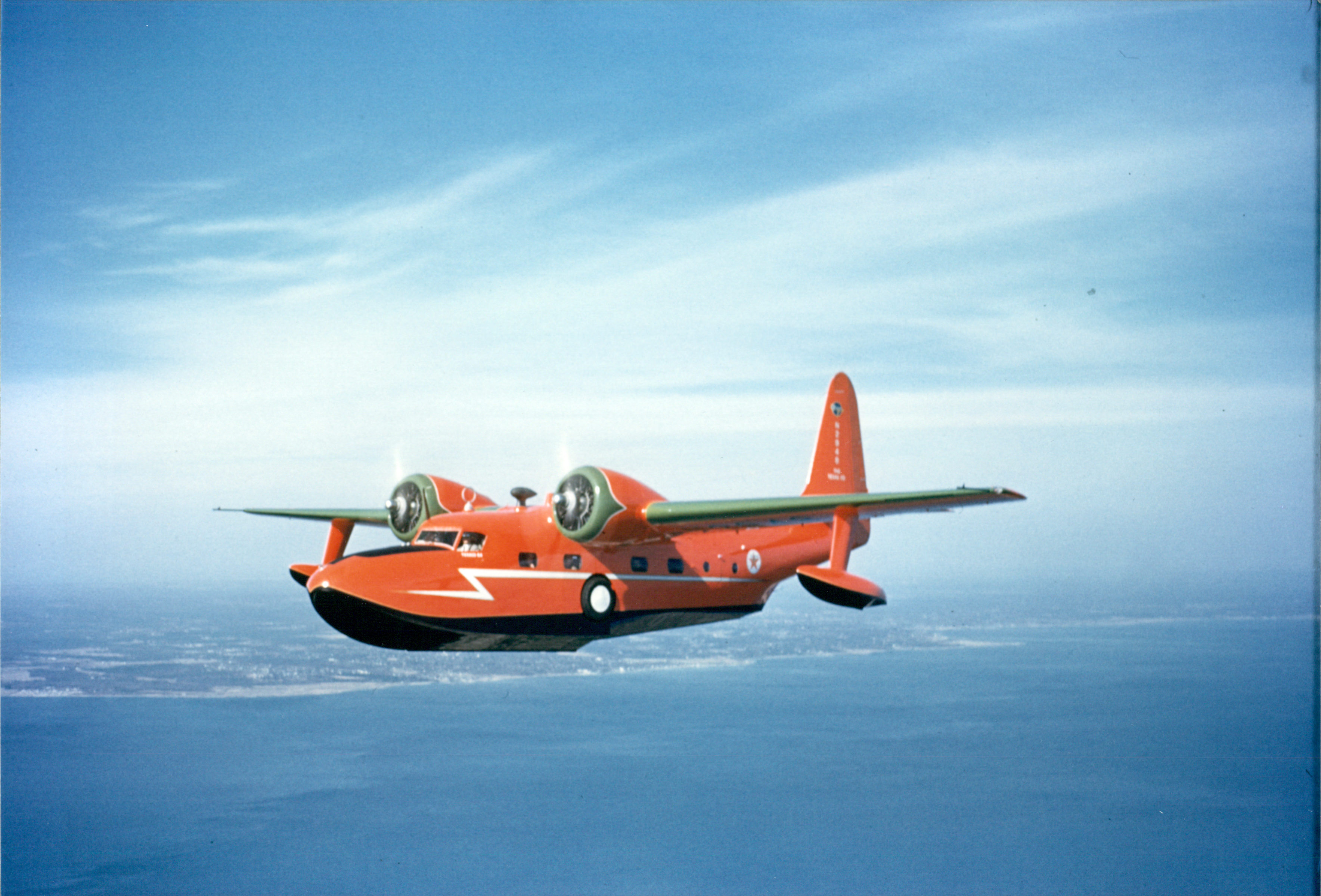Grumman Mallard Type Rating - A Look At This Unique Aircraft
When you think about planes that can handle both water and land, the Grumman Mallard often comes to mind, a true icon of its kind. This particular aircraft, you know, holds a rather special spot in the history of flying machines that manage to do it all, taking off from a lake and then landing on a runway without missing a beat. Its story, as a matter of fact, is one of clever ideas and lasting appeal, drawing in folks who appreciate a plane that offers a bit of flexibility in where it goes and how it gets there.
The Mallard, in a way, represents a significant step for its maker, a company known for its tough and reliable aircraft. It was their way of stepping into the everyday flying machine market, particularly for those who needed a plane that could serve various purposes, whether for personal enjoyment or for carrying goods and people on a smaller scale. This plane, you see, was meant to be a versatile tool for getting around, proving that an aircraft could be both sturdy and graceful at the same time.
For anyone thinking about flying one of these amazing machines, getting a specific authorization, often called a type rating, is part of the path. This special approval shows that a pilot has the necessary skills and understanding to operate a particular kind of aircraft, like the Grumman Mallard. It's about making sure everyone who takes the controls is truly ready for the experience, ensuring safety and good operation for such a distinct piece of airborne equipment, which, you know, is pretty important.
Table of Contents
- What Makes the Grumman Mallard Special?
- How Did the Grumman Mallard Adapt Over Time?
- Getting Your Grumman Mallard Type Rating - What Does It Mean?
- The Company Behind the Wings - Grumman's Legacy
- Grumman's Evolution - From Grumman to Northrop Grumman
- What Kind of Work Does Northrop Grumman Do Now?
- Opportunities with Northrop Grumman - Beyond the Grumman Mallard Type Rating
What Makes the Grumman Mallard Special?
The Grumman Mallard, a rather distinctive aircraft, came into being right after the big conflict ended, specifically in the years immediately following the second world war. It was, in some respects, a continuation of ideas Grumman had already explored with other amphibious plane designs. This plane, for example, shares a similar overall setup to earlier flying boats from the same company, featuring two main engine placements, one on each side, which is pretty characteristic of their approach to these kinds of aircraft.
It was, in fact, the very last of the amphibious planes from Grumman to start its journey from the drawing board to actual flight. This fact gives it a unique spot in the company's long line of aircraft that could land on both water and solid ground. Even though another Grumman amphibian, the Goose, didn't quite take off with airlines as much as hoped, the folks at Grumman believed there was a good demand for about 250 of these new Mallard planes. They saw a real opportunity, you know, for a plane that could offer such adaptable performance.
The Mallard was Grumman's way of getting into the everyday flying machine market, especially for planes that could land on water or solid ground. This meant it was aimed at people and businesses who needed a reliable aircraft for various non-military tasks. It wasn't just another plane; it was a carefully thought-out design meant to open up new possibilities for travel and transport, offering a blend of sturdy construction and the ability to operate from different surfaces, which, you know, is quite a feature.
How Did the Grumman Mallard Adapt Over Time?
Over the years, a good number of these Mallard planes have had their initial Pratt & Whitney Wasp H radial power plants taken out, with more up-to-date turboprop motors put in their place. This kind of change, you see, is a common way to give an older flying machine a new lease on life, making it perform better and carry more weight. It's about updating the plane to meet modern expectations and keep it useful for many more years, which is a clever thing to do for such a classic aircraft.
To really boost the capabilities and cargo-carrying ability of what was, by then, becoming a somewhat older flying boat, a number of these planes went through various updates. These changes were aimed at making the Mallard more efficient and capable in the skies. Someone even went so far as to buy the formal approval paperwork for the Mallard itself and then added the special approval for the turbine engines into that official certification. This meant that the modifications became a recognized part of the aircraft's official design, making the turbine-powered Grumman Mallard type rating a standard, which is pretty significant.
These modifications, particularly the switch to turboprop power, really changed how the Mallard flew. They gave it more muscle, allowing it to take off quicker and carry heavier loads, making it even more practical for its various jobs. It’s a testament to the plane’s original design that it could be so effectively updated, showing just how well-built these Grumman amphibians were from the start. That, you know, speaks volumes about its enduring quality.
Getting Your Grumman Mallard Type Rating - What Does It Mean?
When we talk about a "type rating" for an aircraft like the Grumman Mallard, we're referring to a special kind of approval that a pilot needs to get. This approval shows that a pilot has been trained and tested specifically on a certain kind of airplane, especially those that are more complex or weigh a certain amount. It's like getting a specific license to operate a particular model of vehicle, ensuring that the person at the controls truly knows how that machine works and how to fly it safely. This, in fact, helps keep everyone in the sky safer.
The International Civil Aviation Organization, or ICAO, has a document, specifically Doc 8643, that lists codes for aircraft types that are most commonly used in air operations. This document helps in identifying planes quickly and consistently around the world, which is quite useful for air traffic control and other aviation activities. So, when you think about a Grumman Mallard type rating, its designator would be found in such a document, providing a standardized way to refer to this specific aircraft model.
It’s also interesting to note how rules about pilot approvals can change over time. For example, as of August 4, 1997, some specific type ratings for helicopters that weigh 12,500 pounds or less were no longer given out to people who held an airline transport pilot certificate. This is outlined in a regulation known as 14 CFR 61.5. While this particular rule talks about helicopters and not directly about the Grumman Mallard type rating, it shows how the system for pilot certifications adjusts and develops, always with an eye on safety and the changing landscape of aviation. It just goes to show, you know, how detailed these rules can get.
The Company Behind the Wings - Grumman's Legacy
The Grumman Aircraft Engineering Corporation, which later became Grumman Aerospace Corporation, was a major American creator of both military and civilian planes during the twentieth century. This company had a reputation for building tough, reliable aircraft that could perform well in various demanding situations. They were, in a way, a cornerstone of American aviation, producing many well-known planes that served important roles in both defense and everyday life.
Even though their earlier amphibian, the Goose, didn't quite achieve widespread success with commercial airlines, the people at Grumman still held a strong belief that there was a real demand for their next amphibious design, the Mallard. They thought, in fact, that a market existed for around 250 of these new planes. This conviction shows their foresight and their willingness to keep innovating in the field of aircraft that could land on both water and land, pushing the boundaries of what was possible in aviation, which is pretty admirable.
Their history is filled with examples of how they contributed to the development of flying machines, from planes that landed on aircraft carriers to those that helped everyday people travel. The Mallard itself, as we've discussed, was a key part of their push into the civilian market, showing their adaptability and their drive to meet different kinds of needs in the air. This company, you know, really left its mark on the world of flight.
Grumman's Evolution - From Grumman to Northrop Grumman
The company that once created the Mallard, Grumman, has since become a part of something much larger: Northrop Grumman Corporation. This entity is now a huge American company that operates across many countries, focusing on aerospace and defense. It's a big player in the industry, tackling some of the most difficult challenges in areas like space, aeronautics, defense, and even the digital world of cyberspace. Their work is all about meeting the ever-changing needs of their clients around the globe, which, you know, is quite a responsibility.
Northrop Grumman, with its long history rooted in companies like the original Grumman, is known for its pioneering outlook, its advanced ways of doing things, and the talented people who make it all happen. They are, in fact, constantly pushing the boundaries of what's considered possible. This means they are always looking for new ideas and inventing truly groundbreaking technology that aims to solve complex problems and improve various aspects of our lives, whether it's for security or for scientific discovery.
Their teams are always exploring new areas of study that are just starting to gain attention, and they are busy inventing truly revolutionary technology. This kind of work is not just about making things for defense; it's also about contributing to wider advancements that have an impact far beyond their primary areas. It’s about shaping the future, in a way, through their dedication to discovery and invention, which is pretty exciting when you think about it.
What Kind of Work Does Northrop Grumman Do Now?
Northrop Grumman, as a pioneering company, is deeply involved in a wide range of activities that stretch from exploring outer space to protecting computer systems from digital threats. They are, in some respects, at the forefront of many important advancements. This includes looking into the future of wireless ways to communicate and even exploring how technology shows up in popular culture, explaining the science and engineering behind it all. So, you know, their reach is pretty broad.
Their work involves finding solutions to some of the toughest issues in space travel, the science of flight, keeping nations safe, and the vast networks of the internet. They are constantly striving to meet the developing demands of their clients all over the world. This means they are always adapting and creating new tools and systems to address new problems as they come up, which is a continuous effort, really.
The company's vision, the advanced methods they use, and the dedication of their people are what truly define what can be achieved. They are, in fact, always looking ahead, trying to figure out what's next and how they can contribute to making it happen. It’s a pretty inspiring approach to business, focusing on pushing the limits of what is currently known and done, and that, you know, makes a real difference.
Opportunities with Northrop Grumman - Beyond the Grumman Mallard Type Rating
Northrop Grumman Corporation, as a very large American company focused on aerospace and defense, has a substantial presence globally. With around 97,000 people working for them and bringing in more than $40 billion in earnings each year, it's clear they are a significant player in their fields. This size and scope mean they are constantly looking for talented individuals to join their teams, working on a wide array of projects that go far beyond the legacy of aircraft like the Grumman Mallard.
If you're thinking about a career in these high-tech areas, Northrop Grumman often has many openings. For example, there are often more than two thousand jobs available at any given time. They make it quite simple to see if your background fits what they are looking for by allowing you to use your existing work history details to find suitable positions. This way, you can easily see if your skills align with their needs, which, you know, is a very practical approach to hiring.
So, while the Grumman Mallard type rating speaks to a specific skill in operating a classic aircraft, the company's modern form, Northrop Grumman, offers a vast landscape of possibilities for professionals across many disciplines. Whether your interests lie in engineering, science, or other supporting roles, there are often many ways to contribute to their work in space, defense, and beyond. It’s a pretty big organization, after all, with lots of different roles to fill.
- Taraji P Henson Naked Photos
- Cyclebar Berkeley Ca
- Littlebee Pornstar
- Mierle Laderman Ukeles Upcming Echibitons 2024
- Dawn Ulsan Passerine

Grumman Mallard Cockpit

Grumman G 73 Mallard - Alchetron, The Free Social Encyclopedia

Grumman G-73 Mallard, pictures, technical data, history - Barrie